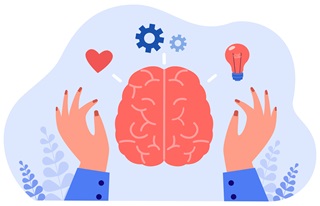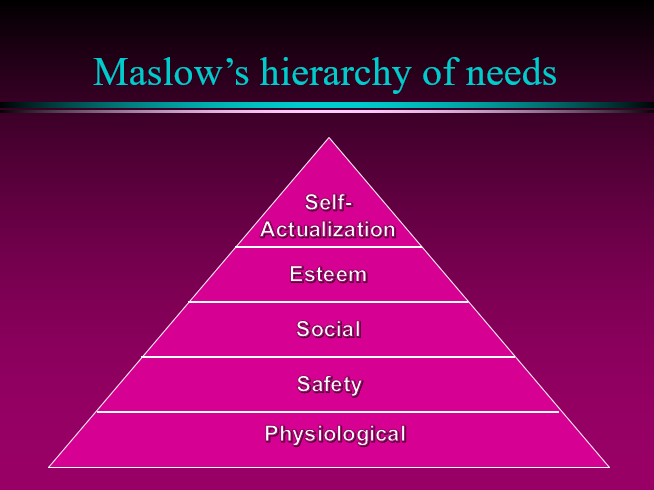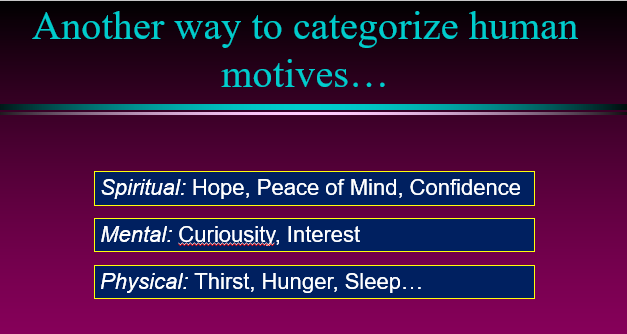 | |||
 |
> Research | > Happiness | > Components |
The word happiness may have slightly different meanings to different people. Here's what I mean when I use the word:
Happiness is your overall satisfaction with life.
Happiness is the net result of all your recent and anticipated joys, less any suffering, frustrations, or disappointments that produce unhappiness.
A joy is any pleasant experience, including little pleasures that we can appreciate from day to day. Joy can arise from experiences such as a nice walk through a park on a sunny day, a warm blanket to curl up in during an evening, time with a loving companion, and many other things too numerous to list.
Your life will have times of joy and times of sadness. Your mind evaluates all of these, weighing one against the other, in order to produce some level of satisfaction.
People strive for happiness, but sometimes their choices are counterproductive. It can help to understand what is needed for happiness. To understand that, it is important to know what happiness is and the role it plays within the mind.
The possibility of having happiness or unhappiness applies to any creature that has a learning mind. The basic functions of such a mind can be summarized into a simple block diagram:

The internal motivations determine "what a person wants to do" (their inherent desires).
Learning is a process by which the person's mind forms an internal model of himself and his environment. Learning relies on observation, and thus it requires a body that can gather information by sight, sound, touch, etc. Construction of mental models also involves analysis (of cause/effect relationships, etc.).
Imagination is a process by which a person's mind forms an internal model of possible scenarios. This is related to motivation and learning, because the individual not only models images of the scenario, but also imagines how he will feel.
This is the process by which the mind uses learned information and imagined outcomes to determine the actions that will satisfy desires.
This is the process in which the mind actuates the body (moves, walks, talks...)
These mind functions are found in humans and many other kinds of animals too. Moreover, if artificial intelligence is used to create a robot that thinks like a person, it must have these functions too.
This became apparent to me long ago, when I created a simple learning game for a computer. It was a simple game played on a grid, somewhat like tic-tac-toe, but more complex. It was designed so that that would improve its skill from experience as it played against its "users". The problem was that I couldn't make it learn what was a "win" as compared to a "loss." Inevitably, that information had to be built in. Other elements of strategy could be learned, but if it didn't know what it was trying to do, it just wouldn't work.
Likewise that must be built into animals too, if they are to learn from experience.
Different kinds of creatures may have different motivators, and typically they are simpler in more primitive animals. The basic ones are a desire to survive, obtain energy (eat), and reproduce. For humans there are many more.
Note that if a function is autonomic, like a heartbeat, breathing, digestion, etc., it does not necessarily have a motivator associated with it, although it may to some extent vary with changes in a motivator.
The functions of the mind work described above work together to satisfy motivators, thus producing happiness. Happiness is more easily achieved when all functions are working effectively.

Image by pch.vector on Freepik.com
There is a traditional misconception that emotion and reason are opposites, and that success is achieved by applying reason and suppressing emotion.
However, if we consider what emotion is, we see that emotions are connected with motivators. In fact, emotion and motivation are flip sides of the same coin. Motivation is necessary to the thinking system, and emotion is simply a manifestation of motivation.
Typically we think of emotions as being sensations. For example, when a person's body is in need of food, they have a "sensation" that they associate with the motivation of hunger.
But there are many sensations that we do not associate with emotion. If I see a red wall, and then look at a blue wall, and then look at a grey wall, there is a different sensation inside the eye in every case. But these sensations do not by themselves constitute emotions.
Moreover, there are emotions such as fear, which are based on imagination. These emotions are not the result of sensations (although there may be some physical manifestations associated with them).
The essence of emotion is not just a matter of sensation; it is a purpose created within the mind. So, if you wish to categorize an emotion as being a sensation, then you must define it as being a sensation that is always associated with a motivation.
Ultimately, if you repeatedly ask yourself "why" you have done something, you must reach the point where you can no longer answer. You have done it merely because you wanted to do it. This is not irrational. It is normal functioning.
People run into difficulties, however, when they have internal conflicts between motivators. For example, a person could be sleepy and hungry at the same time, but he may be unable to satisfy both desires at once. Imagine a person reaching a hotel at the end of a long day of travel, in which he missed his supper and arrives late in the evening. He may feel frustration too, as he has difficulty deciding if he should eat at the hotel's restaurant first, or just drop into his bed now and eat in the morning.
That particular case is easy to solve, as he just needs to judge which need is the most urgent. But that's not the only solution, as it would have been wiser to eat some food as he travelled, thus avoiding the whole problem. Next time he will do it differently. This is where learning and reason come into play.
Regret is a part of the learning experience. People may regret outcomes which turn out to have undesirable consequences for themselves, or for others whom they care about. In some internal conflicts, a person might even be regretting what they are doing as they are doing it! It's called "temptation," where a more imminent desire weighs heavy in their mind, even though they know that a later undesirable consequence will be more significant. To overcome repeating that mistake, a person needs to learn how to make time-independent judgements.
Although motivators and reason are both part of the system, there is a feedback loop in that system too. Many motivators are activated by perception, such as the motivators of fear, anger, and love. If a person displays emotions that are triggered by mistaken impressions, then other people are likely to conclude that he is irrational!
This is what gives rise to the idea that emotion is irrational, when in fact the motivator itself is usually not the problem, but rather it is the mistake in reasoning. Fix the reasoning, and the "apparently irrational" emotion is also solved.
Learning and reasoning complement the other mind functions, in order to satisfy motivators. Each kind of animal has its own motivators, and among individuals of a species there are also variations in how significant each motivator is to the animal's happiness. These variations result in different personalities, and variations in values of what is most important to each of them.
It turns out that those variations are often convenient for people, as there are many different roles and professions that are needed in a society. So if some people prefer one role while other people prefer a different one, that can work out quite well. It is not essential for each person to be identical in order to spread happiness.
In very simple creatures, they may not have much more motive than to eat and reproduce. In many such species, they reproduce in large numbers, and though most of them die young, enough survive to perpetuate the species. If they care whether they live, it doesn't make a very happy life for most of them.
People, however, have evolved into much more complex creatures, that have desires to explore, and discover, and communicate, and imagine, and ponder problems, plus other desires too. There is also an incredible legacy of progress in learning, not only for technology, but also for social organization and decision making. So we have the good fortune that we each can seek more than survival, but also seek happiness, and have pretty good odds of finding it!
When it comes to your motives, it's generally pretty safe to accept yourself as you are, and to pursue happiness by fulfilling your desires. There can be some exceptions to that, but we'll get to that later. Being at the top end of evolved creatures on this planet, people are not solely self-serving, but have natural altruism built in too, which encourages them to undertake projects that help others. Among a group, this produces mutual satisfaction, and through the power of synergy, they end up being happier than any of them could be by themselves.
People can learn how to do this, so that they are generally happy through most circumstances, and they spread happiness, and happiness is spread to them. That's what this web site is devoted to teaching!
So, what motivators do you need to keep satisfied in order to have a happy life? You could look in a thesaurus to find a long list of motive names, but as a simpler approach you may find it helpful to think of motives according to categories. Here are some ways to group motives:

Maslow’s hierarchy was proposed in a 1943 paper, “A Theory of Human Motivation” in Psychological Review, and more fully described in his 1954 book “Motivation and Personality”. It has remained a popular explanation to this time.
In order to have a satisfying life, all of the needs must be fulfilled.
At the bottom of the pyramid are survival needs for food, water, clothing and shelter. The rest of the pyramid is built on that, and most of these titles are self-explanatory.
The “social” level is sometimes called “Love/Belonging”.
The “Self Actualization” level is personal fulfilment, to reach one’s potential. Maslow describes characteristics of reaching this level as: acceptance of self, others, and nature, true to oneself, independent, and compassionate.

Here’s another way of categorizing human motivation. This model derives from religion, but the “spiritual” category doesn’t mean a contact with spirits or ghosts. Rather, it is a state of mind, exemplified by inner peace, hope, and confidence. The opposites of spiritual satisfaction are guilt and despair.
One thing these categories miss is music and beauty. Perhaps they are less important because they are not needs, so a person could be happy without them. But they enhance happiness. Since ancient times philosophers have considered them to be important parts of civilized society.
However, the biggest "missing element" of all is the motive of empathy, by which a person gets vicarious satisfaction or dissatisfaction based on emotion that they detect in other people or animals. Vicarious joy is the easiest way to double one's happiness. Vicarious sadness is also possible, and although that may seem counterproductive, it spurs people to do things to help each other, which brings a long-term overall advantage.
Therefore, to describe the motivators you need to fulfil for happiness, I have used a hybrid of the various classifications above:
For planning purposes, it helps to categorize these motivations into groups. For the Pathways to Happiness methodology, the following collection of motives is used. Fulfilling the green items as the need arises produces pleasure while the red items are displeasure that occurs when the need is not met. So people are motivated toward fulfilling the green items and avoiding the red ones.
We can also use yellow to represent a mild version of dissatisfaction. That might occur for any of the items, but for categories that are typically only a mild dissatisfaction, that is shown below in yellow.
Physical Motives
| Abundance | vs | Hunger *1 |
| Sleep | vs | Sleepiness |
| Comfort *2 | vs | Discomfort *2 |
| Fitness | vs | Atrophication |
| Health | vs | Sickness |
Social Motives
| Love *3 | vs | Loneliness |
| Friendship | vs | Friendlessness |
| Sociability | vs | Isolation |
Security Motives
| Safety | vs | Fear |
| Liberty | vs | Enslavement |
| Financial Security *4 | vs | Insecurity |
Intellectual Motives
| Curiousity | vs | Boredom |
| True Knowledge *6 | vs | Misconception |
| Achievement | vs | Discouragement |
| Mental concentration and work *5 | ||
Artistic Motives
| Dance *7 | ||
| Music appreciation | vs | Noise |
| Appreciation of Beauty | vs | Ugliness |
Empathic Motives
| Empathic Joy | |
| Compassion *8 |
Spiritual Motives
| Confidence | vs | Anxiety |
| Hope | vs | Despair |
| Peace of Mind | vs | Guilt |
| Appreciation *9 | ||
This is not a complete list of every possible motivator, but it is an approximate overview. Satisfaction of the green motivators is a sufficient set that will bring happiness to most people. And of course, that also requires avoidance of the red "flip side" for each motive pair.
One other motivator we might add to the list is sexual desire, inasmuch as all adult animals including humans have a desire to reproduce. In the above list I didn't separate it out, because among humans it works best to not pursue sexual desire by itself, but rather to bundle it with love.
Unlike most other animals, humans are very selective about who they mate with, and their mating desire is closely tied into love. A man wishing to find a mate may have sexual desire for a woman who is attractive, but if he should discover that she is stupid, ignorant, or nasty, that attraction is soon extinguished. The same is true of a woman's feelings about a man. They each seek someone very special to them, and mating without that produces an internal motivational conflict that is counterproductive to happiness.
Love is the more important and difficult element to fulfil, and this motivational list was made with humans in mind. However, it is not wrong to list sexual desire separately if you wish, keeping in mind that it doesn't work very well for humans as an isolated goal.
Love is more enduring, and moreover love can also exist without sexual desire, which is also a reason to focus more on love when planning for a happy life. Loving relationships are common between children and parents, and also with other people, as there is a hazy boundary where friendship and love overlap.
By satisfying all of the motivators as they arise, a person brings themselves into a state of wellbeing, which is a happy life.
Next is the chapter on pursuing happiness. It's about how to bring the above list of motivators into their "green" (positive) state. It also covers the limitations of achievable happiness, some pitfalls to avoid, and a few ideas for enhancing your enjoyment of life.
 Next chapter |
What do you think of the content on this web page?
| Site Search | |
Return to Universal Ethics home page |